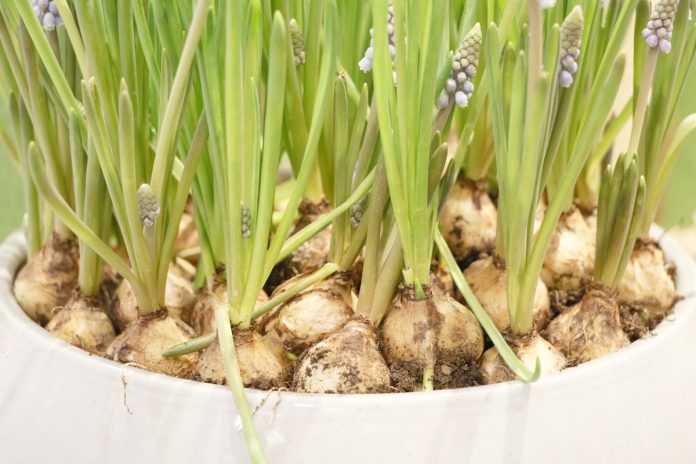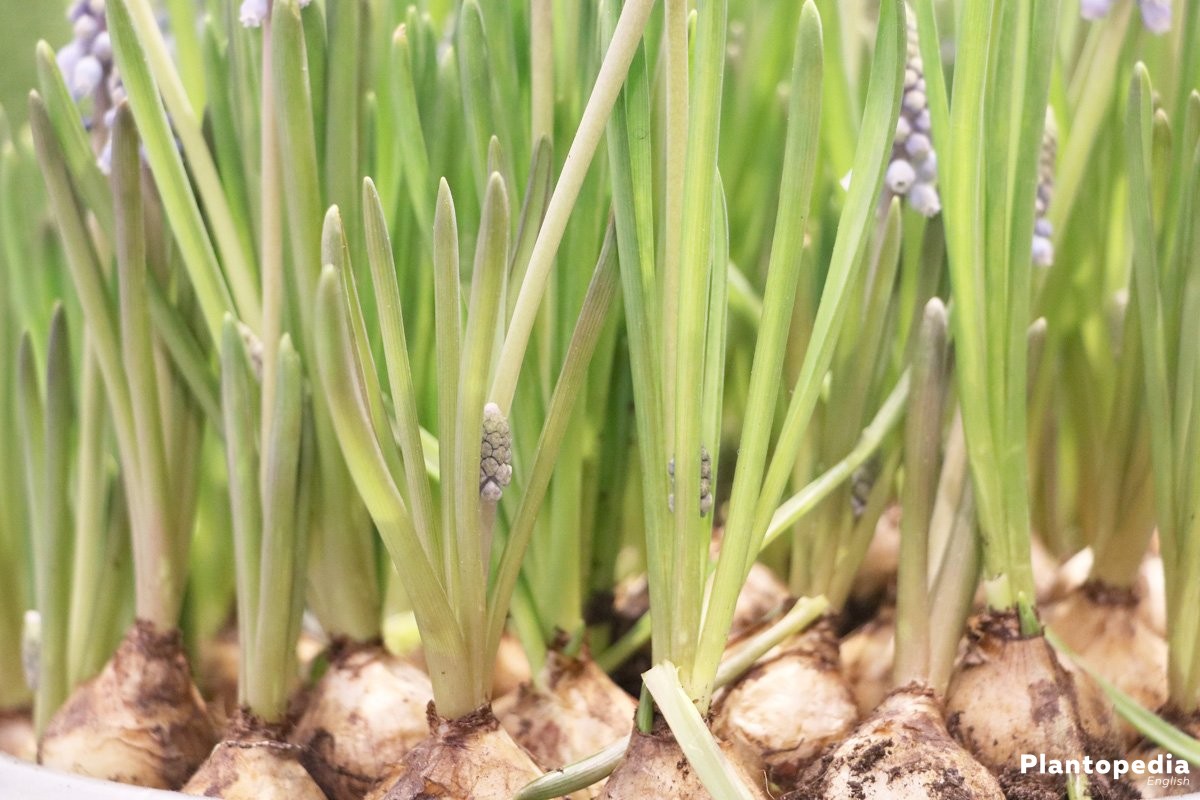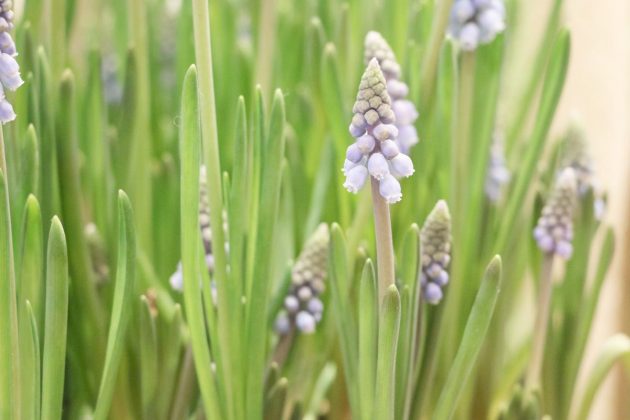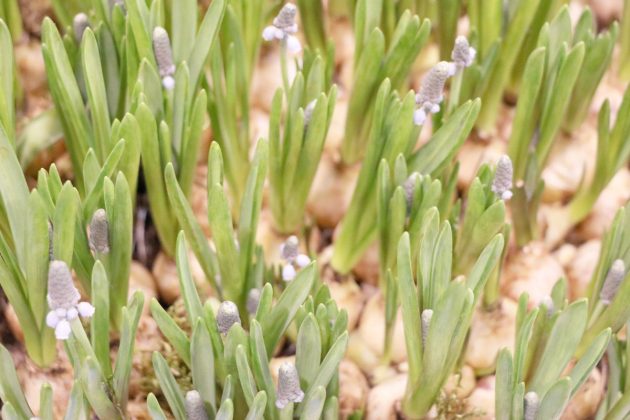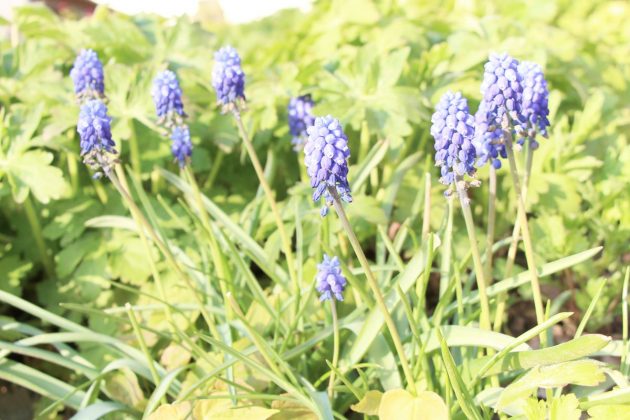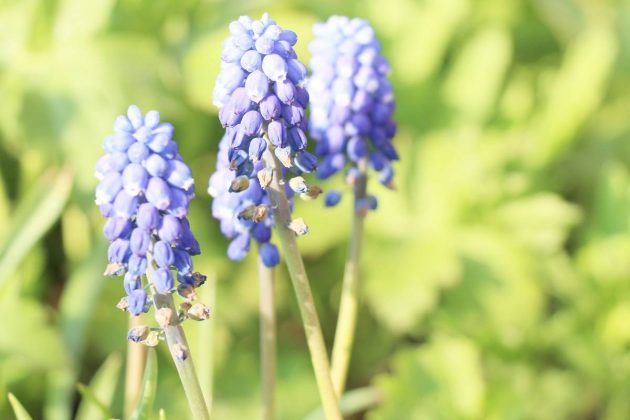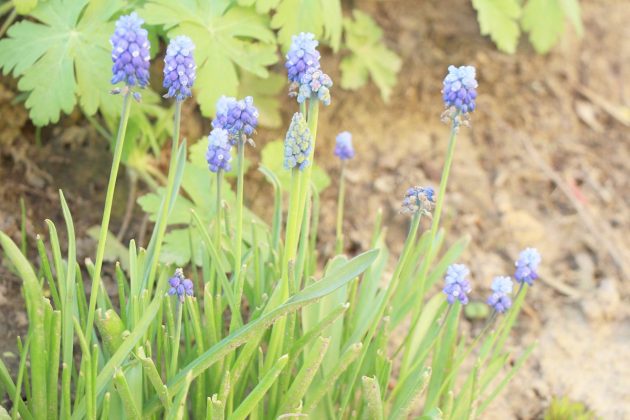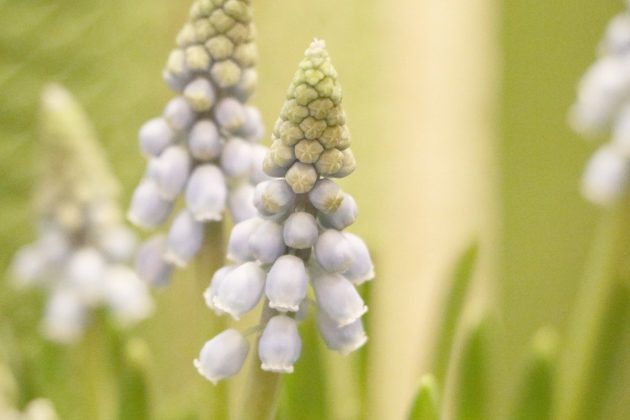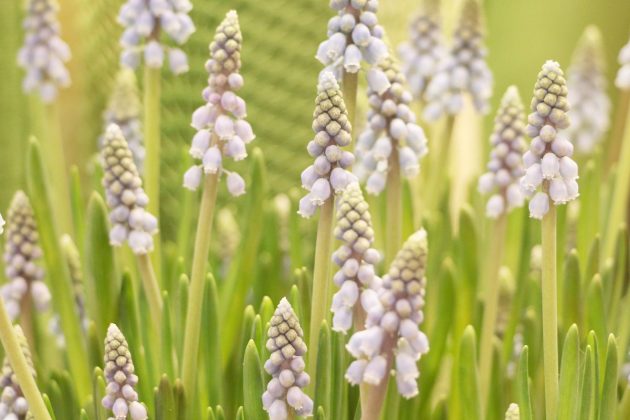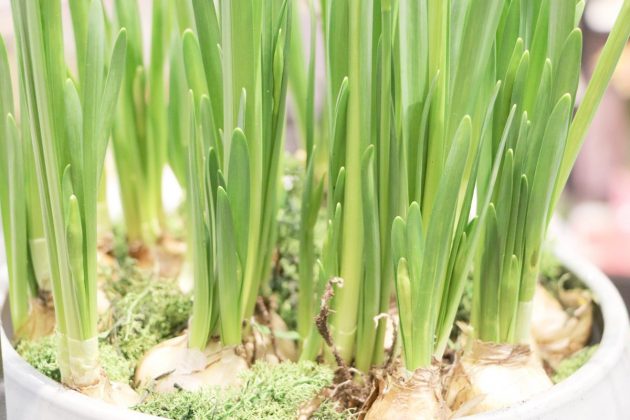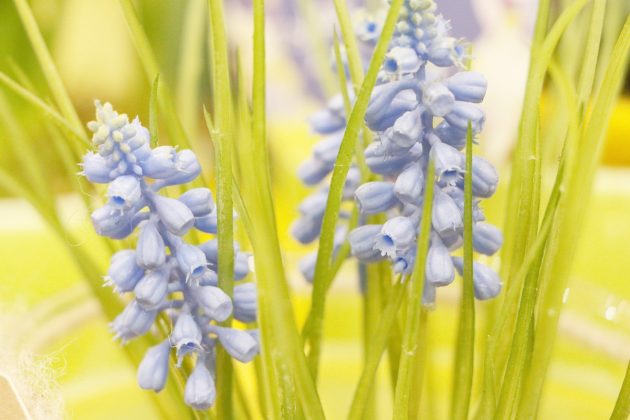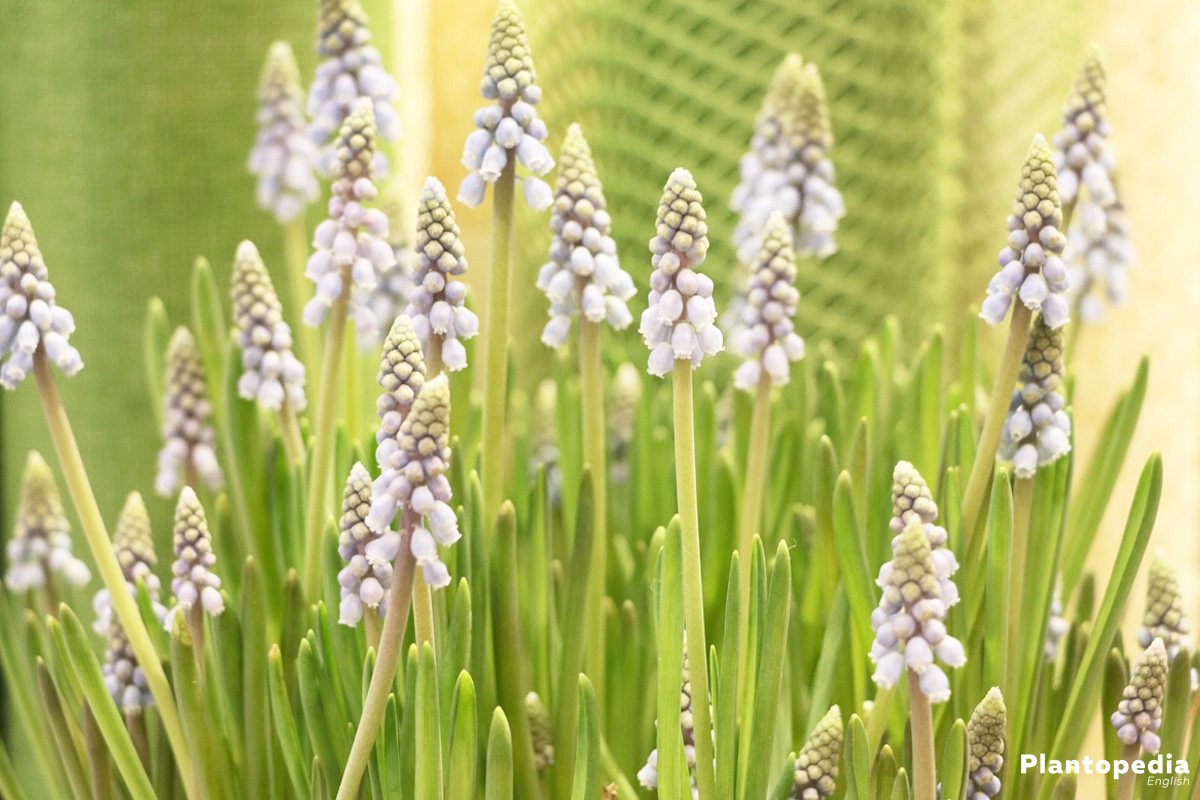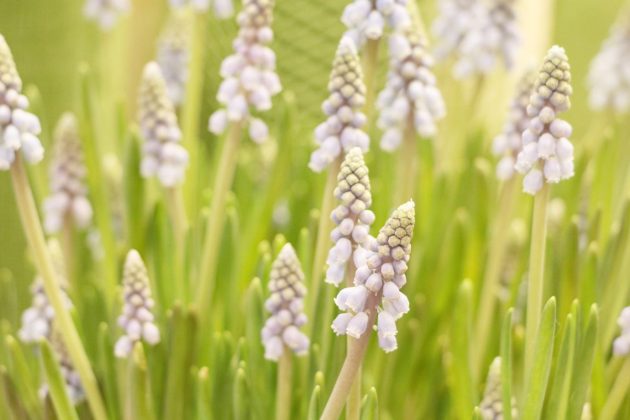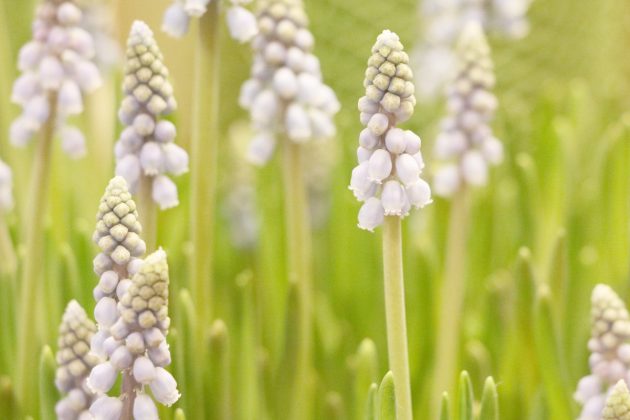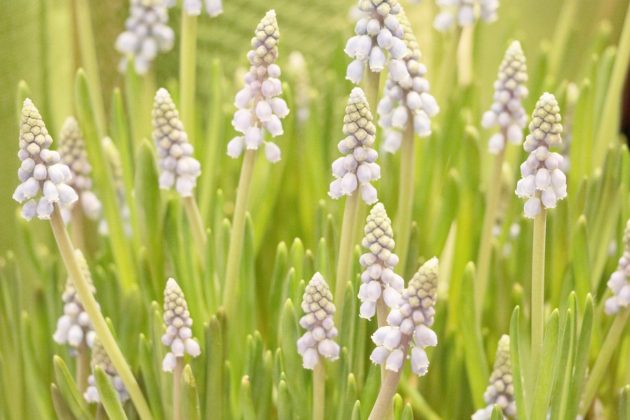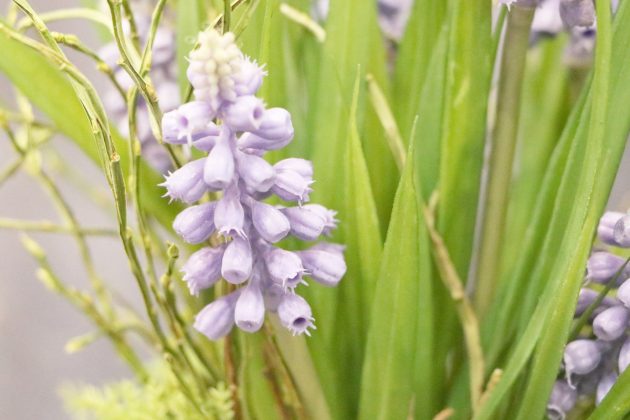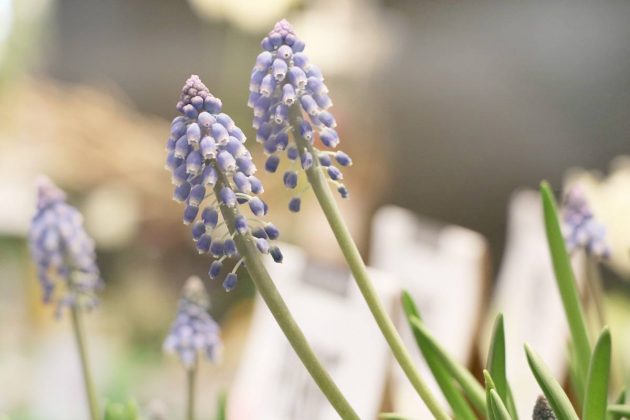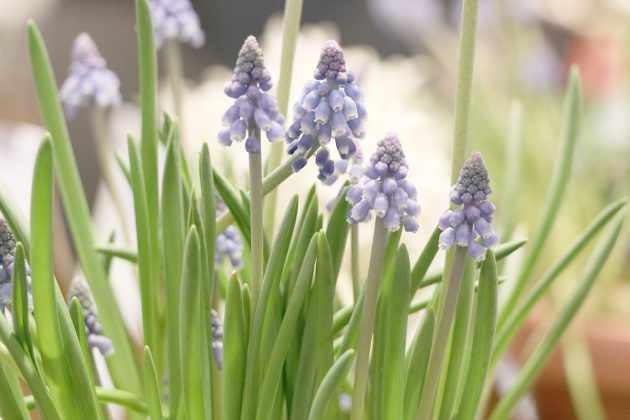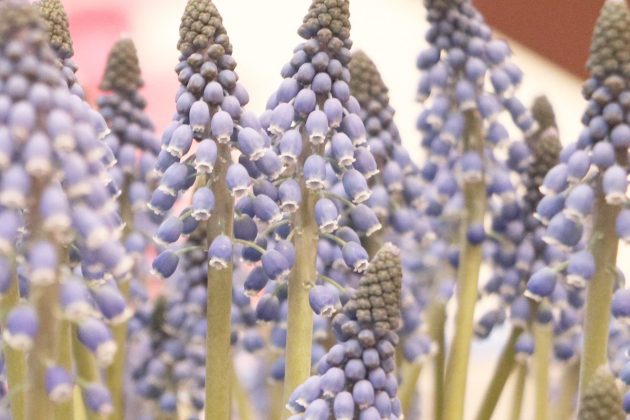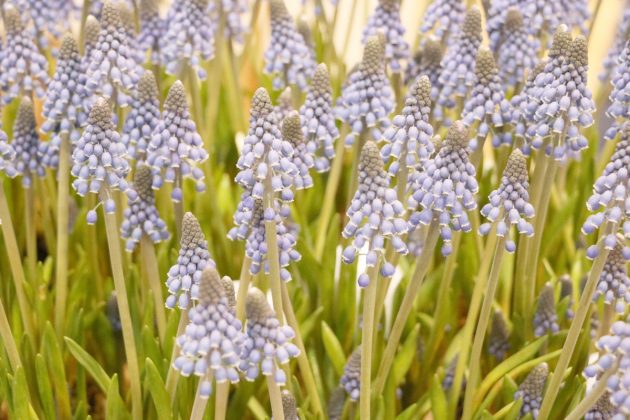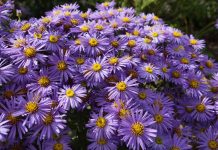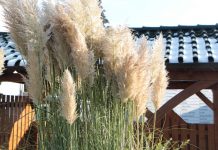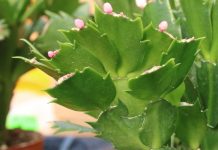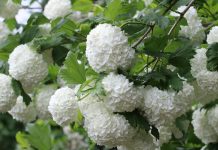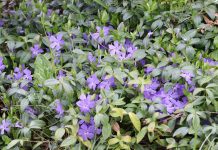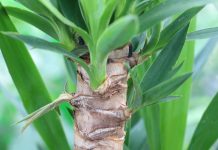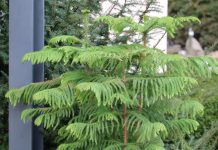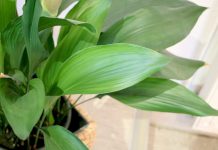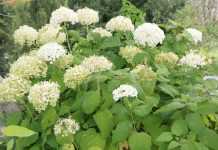The graceful grape hyacinth (Muscari), which has been given its name, because its flowers are reminiscent of upside down grapes, has its origin in Turkey. The mostly blue to violet flowers appear between April and May, so it is an early bloomer. Already in the years between 1560 and 1620, the decorative bulb plant was imported from Turkey to Europe.
Plant Profile
Contents
- Country of origin: Turkey
- cultivated in Europe since the 16th century
- Other name: Muscari, common grape hyacinth
- perennial bulb plant
- blooms between April and May
- Flower colour: blue to violet
- also available in pink or white
- flowers remind of upside down grapes
- small
- can be cultivated well with other bulb plants
- all parts are toxic to toddlers and pets
- can also be cultivated in a pot
A spring flower which is very popular in our area, is the graceful grape hyacinth. Between April and May it forms its blue to violet flowers, reminding of upside down grapes. The undemanding plant is originally from Turkey, but was integrated into our gardens and is now a much appreciated part of the spring garden between tulips, daffodils and other bulb plants. It is also cultivated in a near-natural garden as a first food source for bees or bumblebees.
You’ll find the grape hyacinth (Muscari) in nearly every well-stocked market garden as a bulb, but in its original home country Turkey and in its natural area it is strongly endangered, it is in fact in danger of extinction in the free nature. For this reason, the graceful plant is also mentioned as a rarity on the red list.
Care
When the graceful grape hyacinth, Muscari gets the right care, you can enjoy the winterhardy and undemanding spring flower for many years. Whether in the garden bed or in the bucket, on schedule with the warmer days, the Muscari will again show its beautiful flowers in a great variety. If you note the following points of care, it is quite simple.
Location
The location for the grape hyacinth, Muscari is easily chosen. Whether alternating- or semi-shadow or in the direct sun – it doesn’t matter, everything is suitable. However, the place should not be too dark, as this would affect the flowering.
Thus you should choose one of the following locations for the graceful spring flower:
- in a garden bed in the full sun
- the bed can also be in the semi-shade
- in a bucket on a sunny terrace
- or in a balcony box
- unfortunately, a balcony heading north is not a suitable location
If you plant the grape hyacinth (Muscari) into the bed, you should place it in the direct neighborhood of other bulb plants such as tulips, crocuses or daffodils. Likewise, you should also cultivate summer and autumn flowers in the same bed. Then you have a sea of flowers in the garden from early spring to late autumn.
Soil condition
A permeable, loose, humus-rich soil is perfect for the grape hyacinth.
Substrate
Generally, a normal garden soil, enriched with compost, is already sufficient for the grape hyacinth. Normal flowering soil can be chosen for the bucket planting. In this case, however, you should pay attention to quality, so the soil can remain in the bucket for several years and doesn’t have to be replaced.
Planting time
Since it is a bulb plant, which is already beginning to develop and bloom in the early spring, the ideal planting season is in autumn before the first frost. In the late winter, there are often also pre-grown plants offered in the markets. However, these are not quite as robust as the bulbs for autumn planting.
Planting in the bed
The term planting is not quite right for bulb plants, because actually they are not planted but inserted. Before inserting the bulbs, the soil must be loosened up to some depth so that it becomes permeable. In the same step, you can install a drainage against waterlogging. For this purpose, stones or potsherds are spread on the base of the bed before the loosened and prepared soil is placed over it.
Then the bulbs are inserted:
- drill small holes at even intervals with your hand
- a depth of five to eight centimeters is perfect
- the bulbs are inserted about three times as deep as their size
- arrange the plants in small groups of about ten specimens
- not too tight, otherwise fungal attack may occur on the flowers
- pour them
Planting in a bucket
A similar procedure is carried out when inserting / planting in a pot. Since the grape hyacinths usually make a somewhat lonely impression when they are set as solitaries, you should arrange several bulbs in one bucket when planting.
In addition, you should proceed as follows when preparing and planting in the bucket:
- select the pot size so that several plants can comfortably be arranged side by side
- apply a drainage
- place small stones, gravel or clay shards upon the drain hole
- cover it with planting fleece
- this way no soil can block the drainage
- fill in the soil
- use the thumb to pierce several holes
- insert the bulbs with the roots facing downwards
- pour them slightly
Before the bulbs are inserted to the bed or bucket, you should carefully inspect them. Bulbs with rotten or spongy spots and dried bulbs should not be used but put aside. Only choose the bulbs that are juicy, firm and hard.
Watering
The Muscari needs sufficient water, especially if it is growing in a very sunny location. Waterlogging should, however, be absolutely avoided when pouring. If the water remains in the soil, the flower bulb may rot, causing the flower to die. So on rainy days in the spring the rain water is sufficient. Only during a prolonged period of drought or in case of a bucket plant under a protective roof you must regularly pour the plants.
Fertilizing
In contrast to many other plants, the grape hyacinth (Muscari) should only be moderately supplied with fertilizer shortly before and during the flowering period. It is more important to provide the soil with compost or other fertilizer after flowering. This way, the bulb remaining in the soil can store the nutrients throughout the year, so that it can shine again in full blossom splendor in the next spring.
Therefore, when fertilizing, proceed as follows:
- mix some compost to the soil after flowering
- take about two liters per square meter
- alternatively use fertilizer for flowering plants
- do not fertilize too much, because of the higher phosphorus content
- using liquid fertilizer only once after flowering is completely sufficient
Cutting
The grape hyacinth must not be cut during its growth- and flowering-phase, of course. It is only when the flowers have faded, that the whole flowerstock is removed. If the remaining leaves turn yellow, leave them standing until they are completely dried up and then carefully pull them out of the bulbs.
The bulbs themselves remain in the soil until the next shoot. If you, however, desire a multiplication in the bed by sowing, let the dried flowers stand until they have lost the seeds. With a little luck, the wild sowing succeeds.
Wintering
The grape hyacinth must remain in the bed or in the bucket over the winter, so that it can shoot again when the first sunrays show up immediately after the cold months. Regarding the bed plants, no preparation is made for the wintering, but the area can be covered with mulch.
If the Muscari were cultivated in a bucket, the following should be considered:
- place the bucket in a sheltered place before the frost starts
- the place may be cool and dark
- dry cellar or garage
- keep the soil slightly moist
- regularly check for rot
- when the first sprouts appear, bring it to a bright place
- the winter sun is a good choice
Multiplication
The Muscari can be multiplied by seeds. This is achieved by the wild sowing, in which you just leave the inflorescences on the plant after fading and drying out, until they have lost the seeds and these have spread in the bed.
You can, however, also carry out a controlled sowing with seeds. Bulb plants form side bulbs, which can be used for a multiplication and also a division of the flowering bulbs can be effective, if you wish to multiply your grape hyacinths.
Sowing
You can get the seeds of the grape hyacinth in the market garden or collect them in your own stock. They are regularly matured between May and June, depending on how long the plant has flowered before. As soon as the fruit pans are dried out and opened, the right time to collect the seeds has come. But you have to take a look at your plants every day, otherwise the seeds fall out and are blown over the bed.
Therefore, when collecting your own seeds, proceed as follows:
- remove the dried inflorescence completely
- use scissors and cut directly above the bulb
- then shake out the seeds onto a piece of paper
- keep the seeds in a container in the refrigerator until sowing
- they are cold germinators
The ideal time for sowing is autumn or late winter. The seeds can then be sown directly into the garden bed or the bucket. The sowing in the pot is, however, recommended, because the grape hyacinths put all their energy into the formation of a powerful bulb in the first years and therefore no flowering takes place in this period. It may take several years.
In the following we explain how you can ideally sow the Muscari:
- fill small pots with soil
- add a seed to each pot
- slightly cover it with soil
- put the pots in a cool plac
- always keep the soil moist
- place the pots a little warmer after the cold period
- ideal germination temperature is 15 ° Celsiu
- it takes about two to three weeks for the seeds to germinate
In spring and summer until autumn, the seedling can be placed in a bright, sheltered place, in winter it must be frost-free. Keep the soil moist for the entire period of bulb formation. If small bulbs have formed, they can be replanted into the garden bed or a larger bucket.
Division
Since it is a bulb plant, it can be multiplied by division. For this purpose, the bulbs are removed from the soil in autumn to be divided as follows.
- use a spade to carefully lift them out of the ground
- make sure that the roots are not damaged
- separate the individual root sections of the bulb
- immediately put the split bulbs into the soil again
Side bulbs
The multiplication by the side bulbs formed over the year is quite simple. These can easily be removed from the mother bulb in the summer without much effort and put into their own place.
Toxicity
The Muscari is toxic in all parts, it can cause skin irritation with itching on contact. Furthermore you shouldn’t put the different parts of the plant or the seeds into your mouth.
Especially if small children or pets are part of your household, you should better avoid grape hyacinths or cultivate them in a pot so high that neither children nor animals can reach them. A higher fence around the bed may be a solution too. You should always wear gloves when gardening with your grape hyacinths.
Diseases
Among the known diseases of the grape hyacinth are the smut fungi as well as the root rot, but these usually occur as a result of maintenance errors.
Smut fungus
Especially the graceful flower heads can suffer a smut fungus. It can be recognized by the following symptoms.
- dusty spots
- looking charred
- bright spores
Unfortunately, only the removal of the entire inflorescence helps to prevent this fungus from being transferred to the bulb and damaging the plant as a whole. In the following year the flower will sprout again. The disease usually occurs as a result of a too dense planting.
Root rot
This disease is also usually a maintenance error. Either, already damaged bulbs were used, it was poured too much or the water can not drain properly, so that waterlogging occurs. Unfortunately it is now reasonable and necessary to remove the whole bulbs. The soil should not be watered in the next few weeks to make sure it can dry.
Pests
Meadow voles and common voles are known as pests who like to eat on the bulbs. Either you can plant garlic around the bed, or you plant euphorbias in the immediate vicinity, because they are a deterrent to the voracious pests too. If all this doesn’t help, a so-called vole fence can be installed into the soil around the grape hyacinths.

